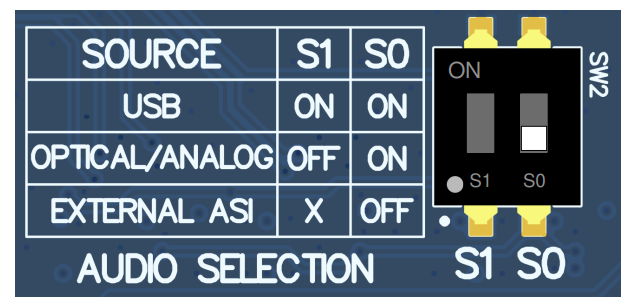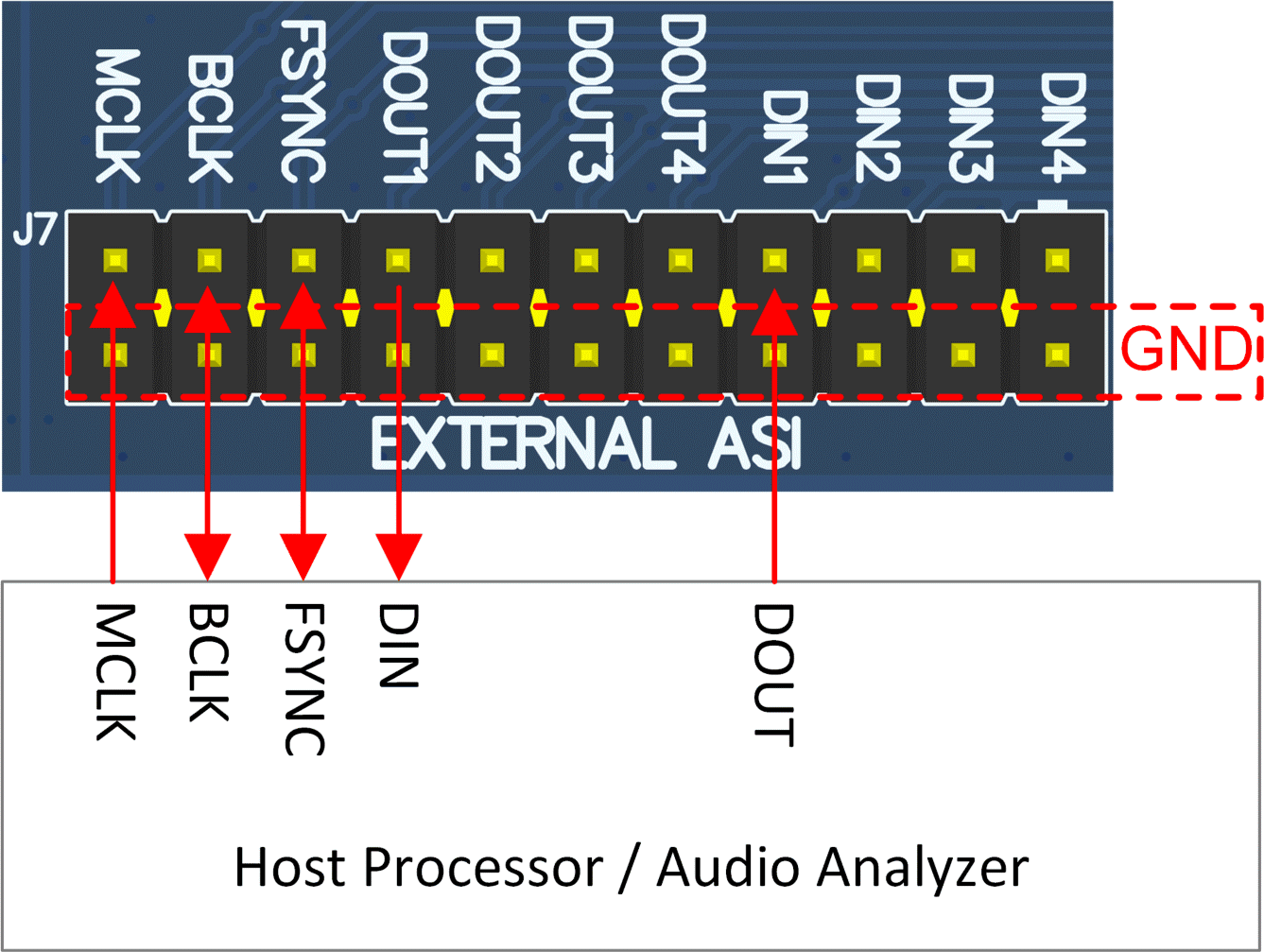SLAAEC6A October 2023 – January 2024
- 1
- Description
- Get Started
- Features
- Applications
- 6
- 1Evaluation Module Overview
-
2Hardware
- 2.1 System Overview
- 2.2
Hardware Overview
- 2.2.1 AC-MB Settings
- 2.2.2 TAx5x1xQ1EVM-K Hardware Settings
- 2.2.3 Diagnostics Hardware Setup
- 2.2.4 GPIO1 Hardware Configurations
- 2.2.5 GPO1A Hardware Configurations
- 2.2.6 GPI1A Hardware Configurations
- 2.2.7 GPI2A Hardware Configurations
- 2.2.8 I2C Address Hardware Configurations
- 2.2.9 Audio Serial Interface Hardware Configurations
-
3Software
- 3.1 Software Description
- 3.2 PurePath Console 3 Installation
- 3.3
TAx5x1x-Q1 EVM GUI
- 3.3.1 Software Overview
- 3.3.2 Configuration View
- 3.3.3 End System Integration View
- 3.3.4 Register Map View
- 3.3.5 Preset Configuration
- 3.3.6 I2C Monitor View
- 3.4 Configuration Examples
- 4Hardware Design Files
- 5Additional Information
- 6Revision History
2.2.1.1.3 External Audio Interface Mode
In this mode, the audio serial interface clocks for the evaluation board are provided through connector J7 from an external source. This architecture allows an external system to communicate with the evaluation board, such as a different host processor or test equipment (Audio Precision™). The clocks generated from the USB interface and PCM9211 are isolated with this setting. Figure 3-6 shows the AC-MB audio setting for the external mode of operation.
 Figure 2-6 AC-MB External Audio Interface Setting
Figure 2-6 AC-MB External Audio Interface SettingFigure 3-7 shows how to connect the external audio interface. Odd-numbered pins are signal-carrying; even-numbered pins are connected to ground.
 Figure 2-7 AC-MB Connection with External Audio Serial Interface
Figure 2-7 AC-MB Connection with External Audio Serial Interface